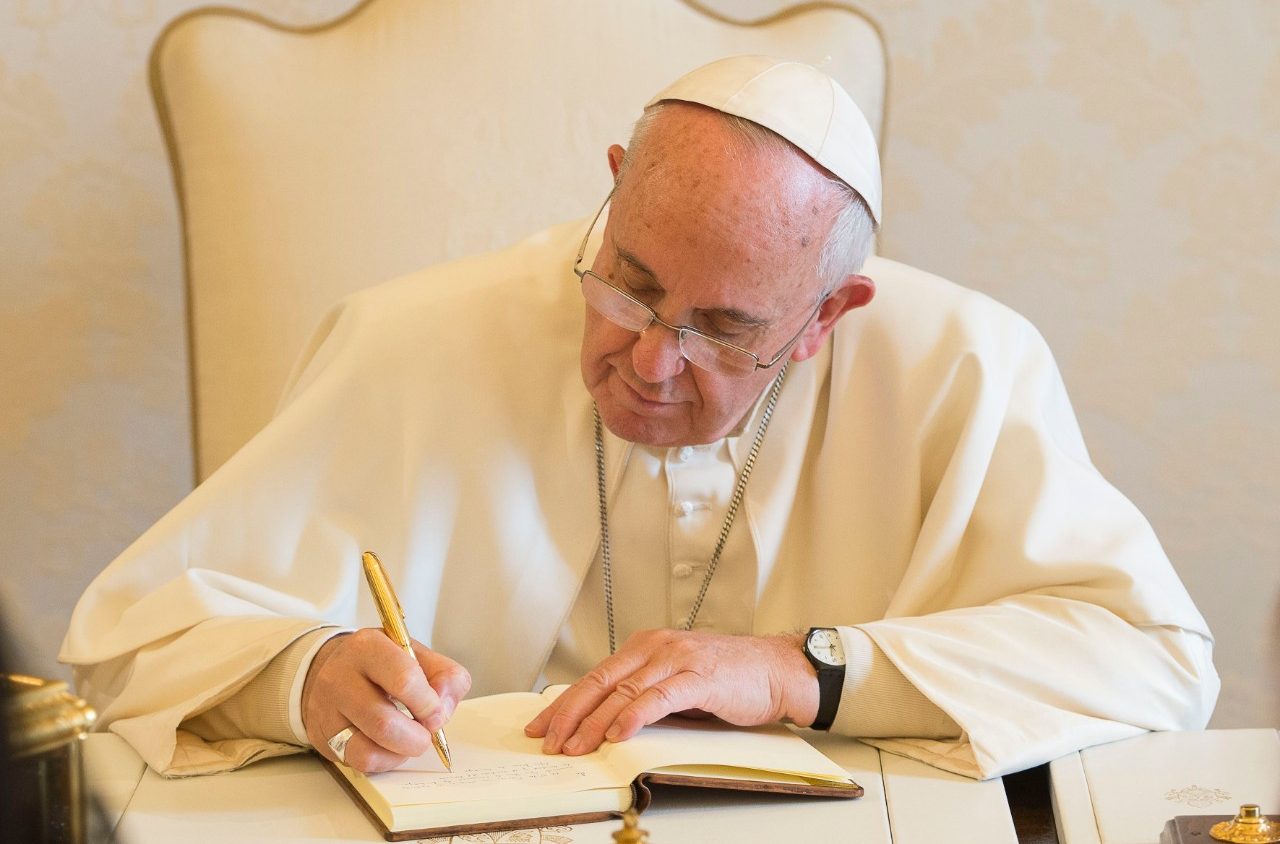Pope Francis Reflects on The Heart of Jesus
Canadians seem to have a high regard for Francis. Many see him as a breath of fresh air – perhaps even the kind of man that they’d love to welcome as their own parish priest. At the same time, the Catholics I know don’t spend their free evenings reading lengthy tracts from the Vatican. After all, has anyone you know already made it through the 54 typed pages of Dilexit Nos, “On the Human and Divine Love of the Heart of Jesus Christ?” (I didn’t think so…)
Perhaps a snapshot of this pope’s most recent text might provide a more-accessible hint of Jorge Bergoglio’s latest musings?
Francis has just released his fourth encyclical letter. He contends that his reflection is related to his two earlier “social encyclicals” (2015’s well-known tract on the environmental crisis, Laudato Si; and 2020’s Fratelli Tutti, on social fraternity.) The timing remains mysterious. Why release such a major teaching document during the final days of the Synod on Synodality, a gathering in Rome of over 350 voting delegates from around the world, including for the first time, women and other lay persons?
The text itself reflects this current papacy – it is written in a readable, pastoral, tone rather than academic, theological language. The title of one section suggests the point of the exercise: “The world can change, beginning with the heart.”
The introductory paragraphs poetically imply that all of life’s major questions “lead us back to the heart.” (#8) Our heart is described as “the ultimate judge, not of what we show or hide from others, but of who we truly are. It is the basis for any sound life project; nothing worthwhile can be undertaken apart from the heart.” (#6) Yet, in contemporary societies, we face a most decisive question, “Do I have a heart?” (#23) For too many, according to Francis, “no room is left for the heart.” (#9)
So, the challenge is to listen more closely to the beating of our own heart, “but deeper still, the beating of a trustworthy presence, perceptible with faith’s senses and yet much more real: the presence of Christ, the heart of the world.” (#81) Francis recognizes that “Only the heart is capable of setting our other powers and passions, and our entire person, in a stance of reverence and loving obedience before the Lord.” (#27)
Unsurprisingly then, the point of rediscovering the importance of the heart leads to the encyclical’s contention that “the Sacred Heart is a synthesis of the Gospel.” (#83)
Several popular manifestations of devotion to the Sacred Heart have, for centuries, been observed in various cultures – and Francis deeply appreciates what is known in Latin America as “popular religiosity” (or the rituals and observances that lead the many to public processions, pilgrimages, practices and prayers.) While acknowledging that no image is a perfect representation for all places and times, we can respect the histories and devotion of the faithful.
North American Catholics of a certain age will remember growing up with images of the Sacred Heart of Jesus gazing down at us from portraits depicting the pierced and burning heart of Christ, and feast days with special observances. While suggesting that it was St. Augustine who opened the way to devotion to the Sacred Heart (#103), Francis writes entire sections on the meaning of the Sacred Heart among many Church Fathers as well as the Papal Magisterium. He quotes at length (!) a long series of saints like Therese of the Child Jesus, the 17th century Claude de la Colombiere, the hermit Charles de Foucauld, St. Francis de Sales, the visionary St. Margaret Mary Alacoque, missionary Daniel Comboni – and It might have been expected that the first Jesuit pope would also note how Ignatius brought his Spiritual Exercises to a crescendo at the foot of the cross!
While Eugene de Mazenod’s devotion before the cross is not specifically noted, the pope is aware that mentioning all the male and female congregations whose origins were marked by devotion to the heart of Christ “would be an endless undertaking” (#150). Francis offers them all his paternal blessing.
The text considers key aspects of devotion, including themes of consolation (reflecting on the suffering of Christ when his side was pieced by the lance #151) compunction (“the natural desire to console Christ” #158), and even the social significance of reparation (#181). In a section entitled “The beauty of asking forgiveness” the Holy Father writes lines that Canadians might take to heart in our reconciliation efforts with Indigenous peoples:
“We should never think that acknowledging our sins before others is somehow demeaning of offensive to human dignity. On the contrary, it demands that we stop deceiving ourselves and acknowledge our past for what it is, marred by sin, especially in those cases when we caused hurt to our brothers and sisters.” (#188)
St. Paul says Dilexit Nos (He Loved Us) in Rom. 8:37. Francis, through this encyclical, invites us to have a conversation with God, “heart to heart.” We might even begin with the traditional prayer, “Jesus, make our hearts more like your own.”
By Joe Gunn


